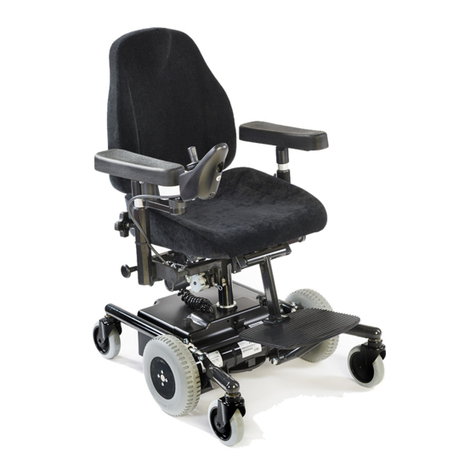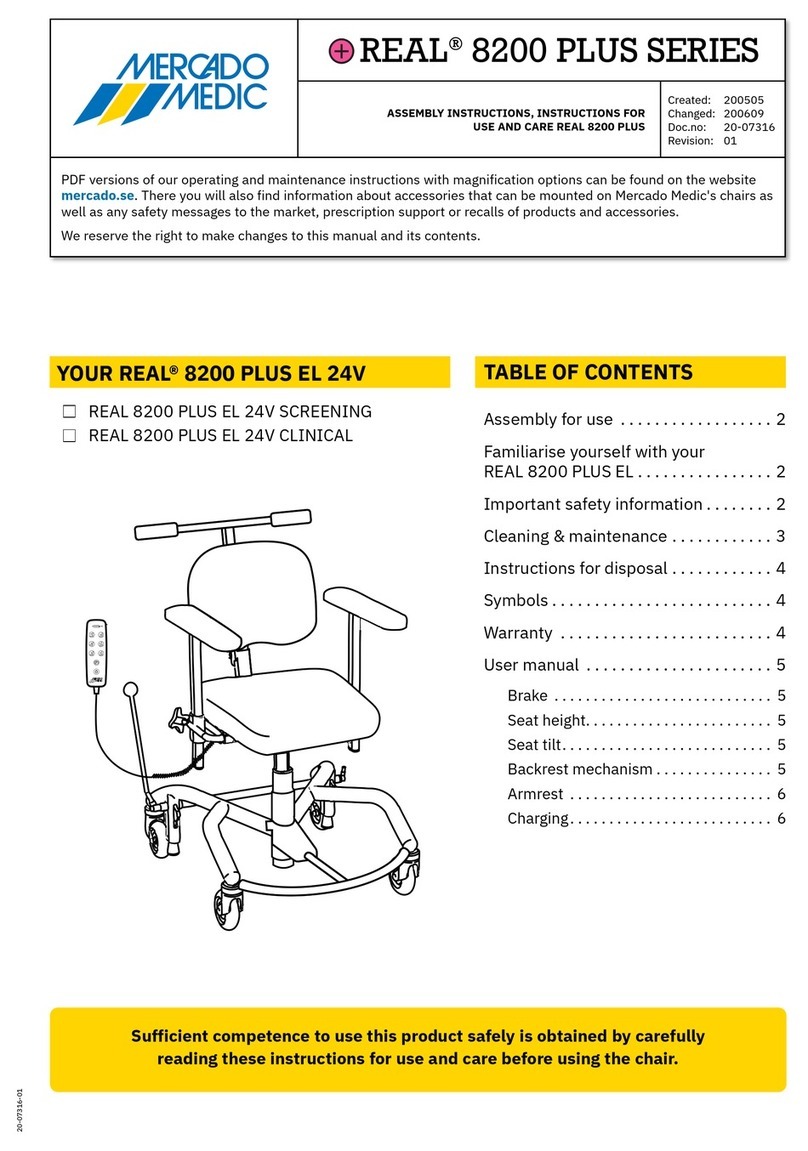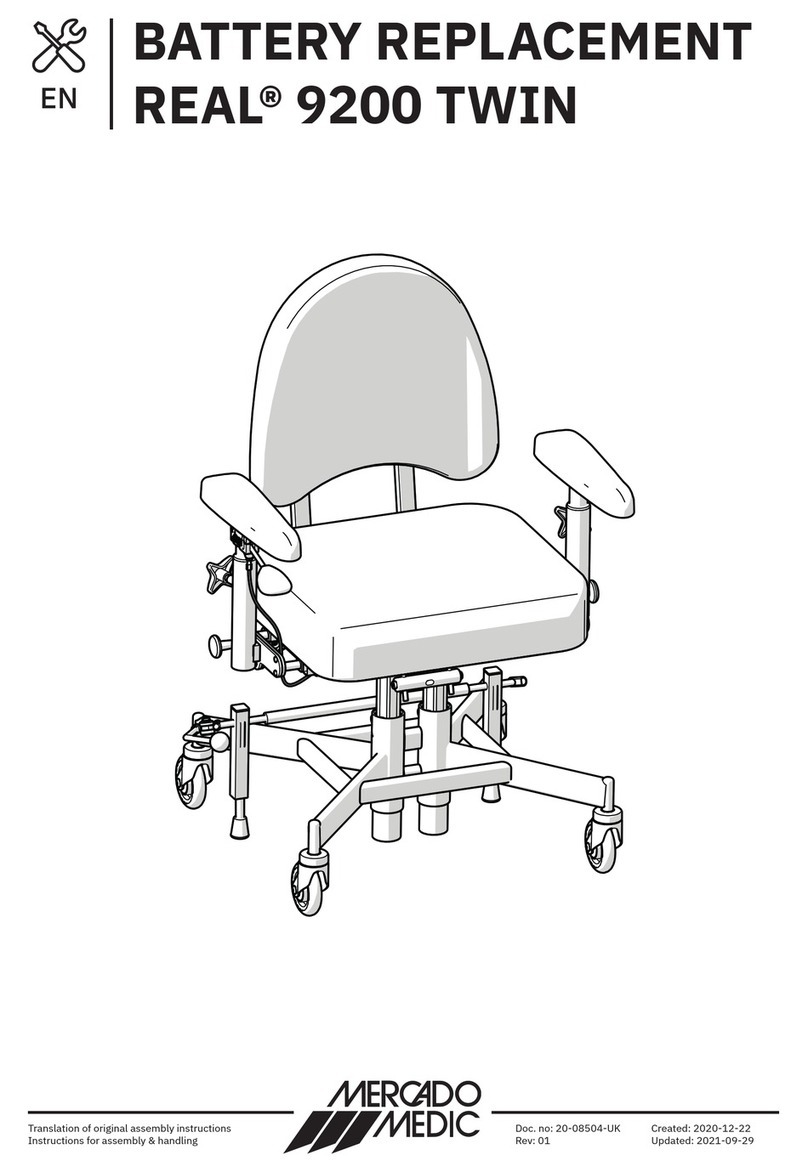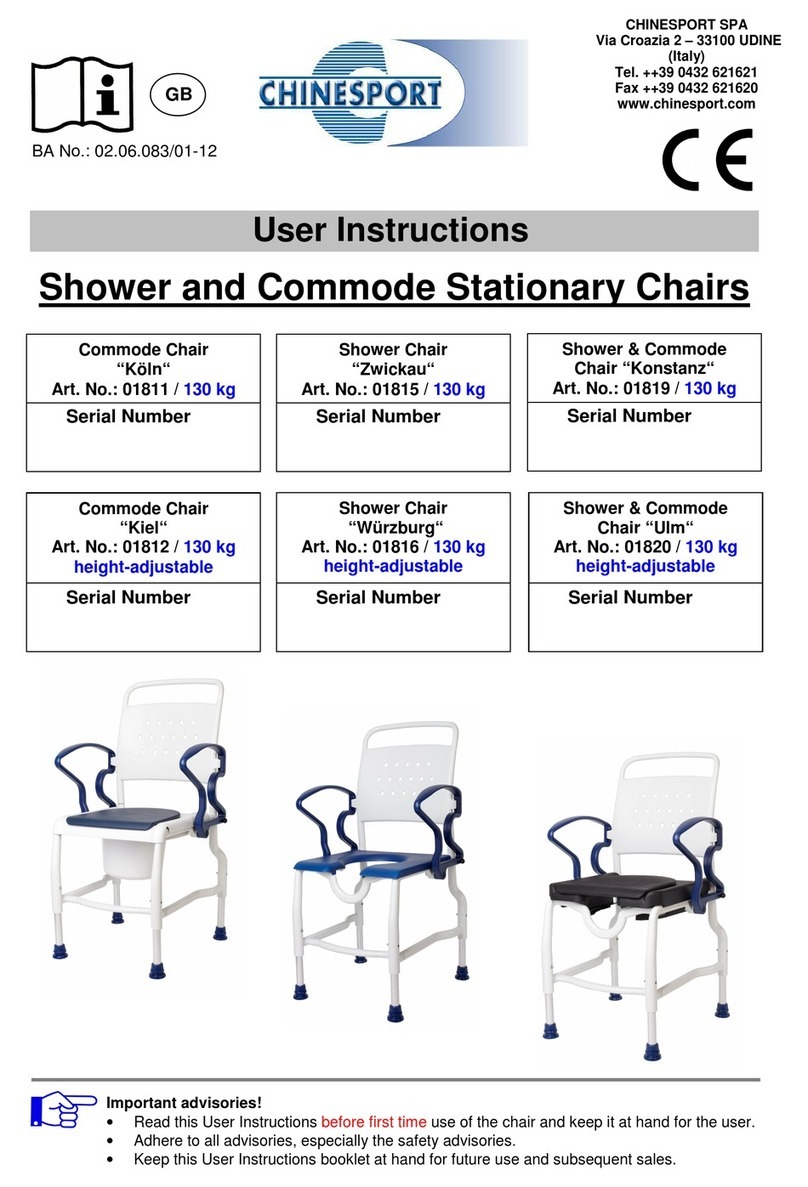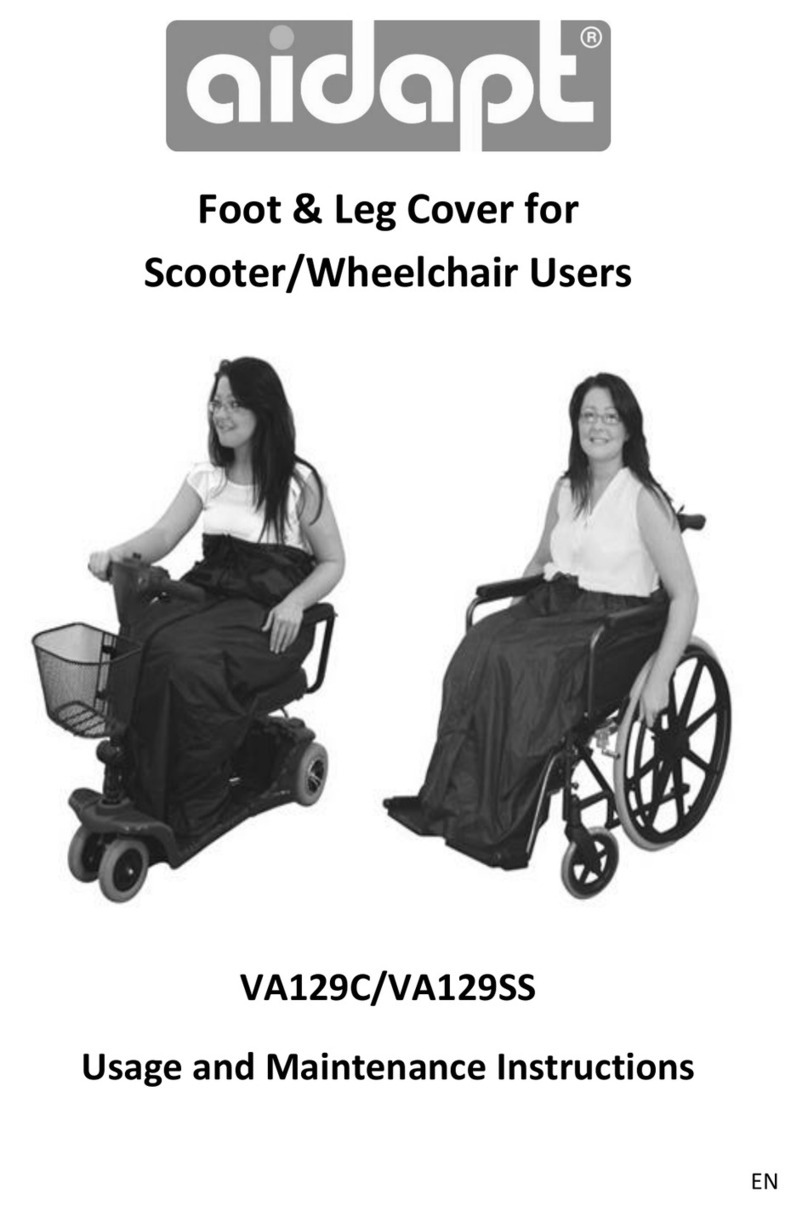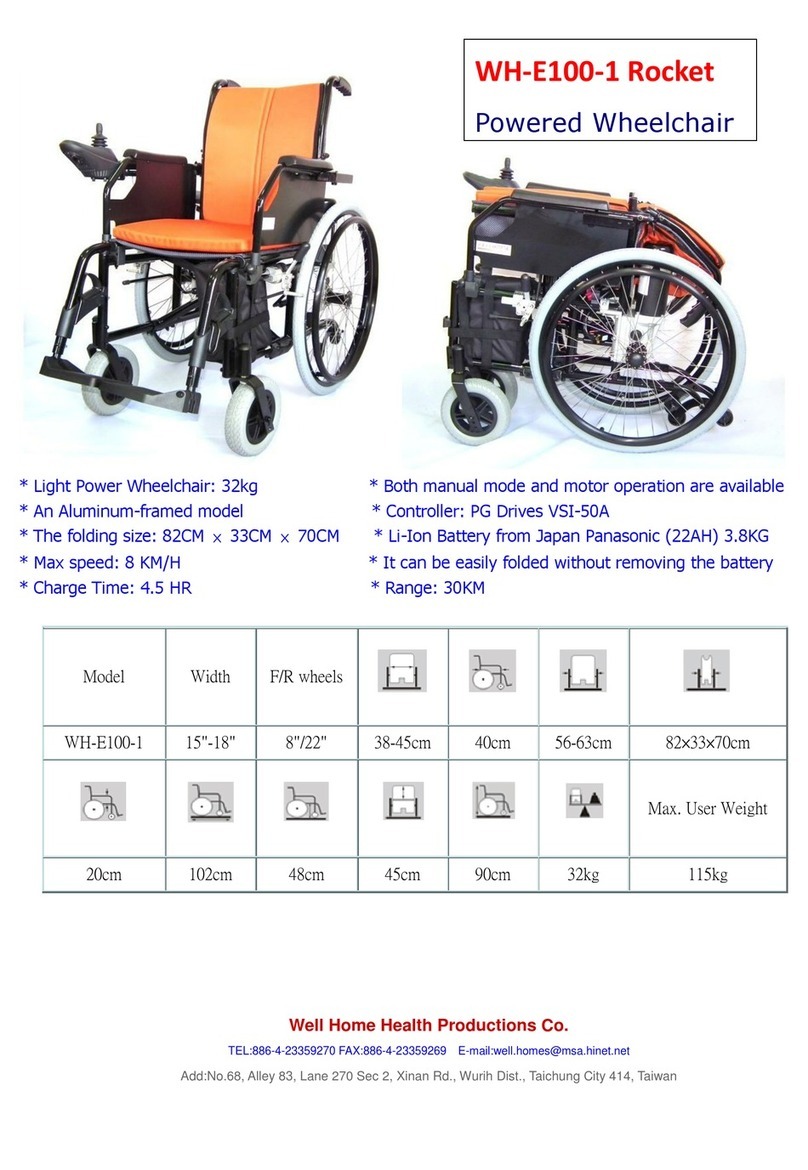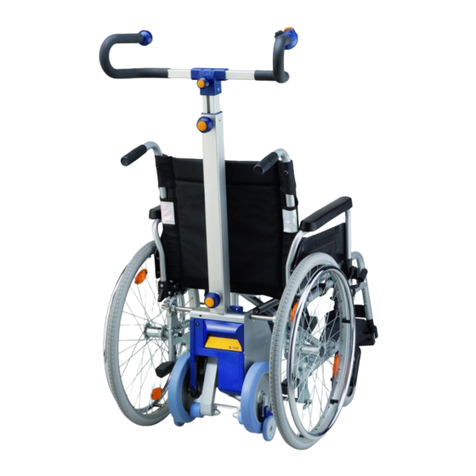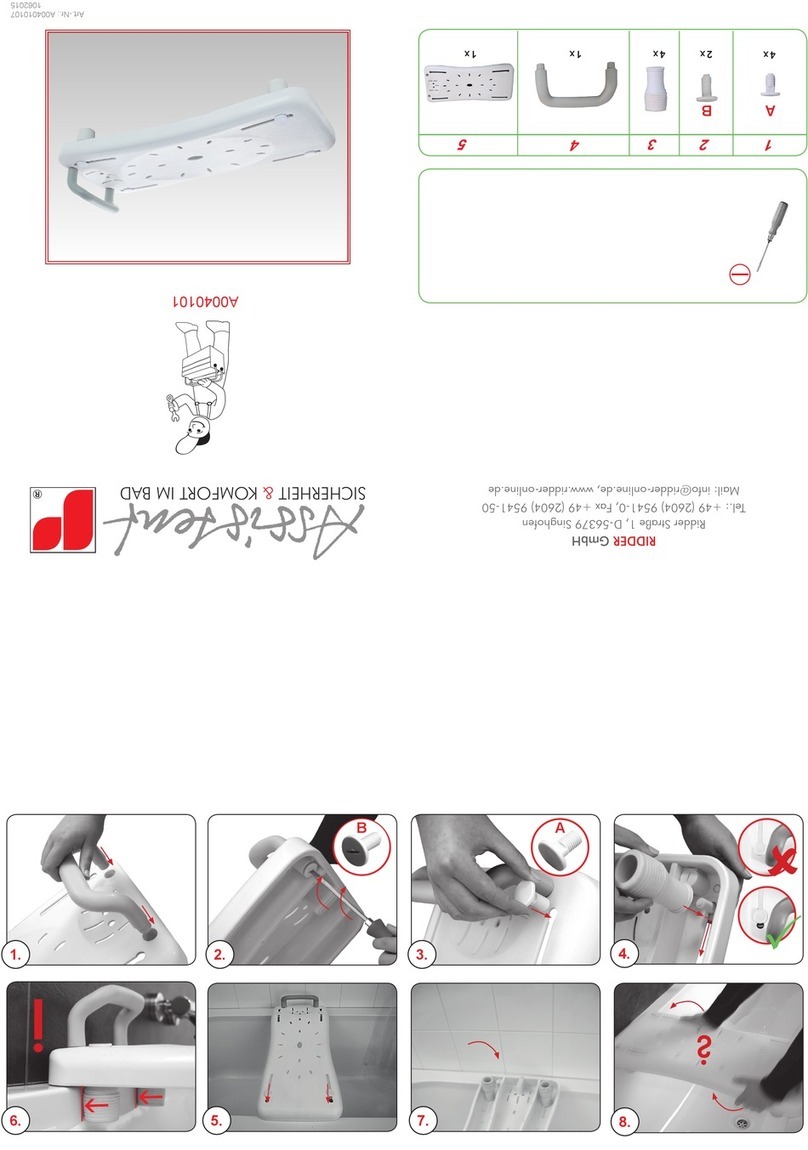
8
Instructions for use for medical electric wheelchairs Getting started
21-08877-UK-02
• Operate the device with caution when the
seat is in the raised position. The power of
the motors is automatically reduced when
the seat height is too high to be driven
with adequate stability at higher speeds,
thereby also affecting the ability to avoid
obstructions.
• The device must be operated with care.
Always be aware of your surroundings
before moving. Pets or children on the
floor could be easily hit.
• Charge the device according to these
instructions in this user manual, see 2.3.
Charging.
• The charger must not, fully or partially, be
immersed in water or covered with snow.
• Turn the device off when it is not in use.
• control unit emergency stop: If, for some
reason, the device does not cancel a
movement when the control unit lever is
released, the movement can be stopped
by pressing the main switch.
• Wireless emergency stop with remote
control: An assistant can remotely
stop the device using an emergency
wireless stop (accessory). To activate the
emergency stop, quickly press the remote
control button once. To deactivate the
emergency stop, quickly press the remote
control button once.
• Button lock on the LiNX REM211 control
unit: To activate the button lock, press
and hold the main switch for at least
4seconds. To deactivate, press and hold
the main switch until the horn button
flashes green. Press the horn twice within
the space of 10 seconds.
• Button lock on the LiNX REM400 and
LiNX REM500 control units: To activate
the button lock, press and hold the main
switch for at least 4 seconds. The button
lock is activated when a padlock symbol is
displayed. To deactivate the button lock,
press and hold the main switch until the
padlock symbol appears on the display.
Press and keep holding the padlock
symbol within the space of 10 seconds.
• Alarm for brake disengagement: If the
brake is disengaged (OFF) when the
device is ON position, the control unit will
display an alarm and you will not be able
to drive the product. When the brake is
re-engaged, the alarm will disappear and
the device can be driven again.
• Limp mode: In the event of less serious
defects, you can continue driving the
device in limp mode. Driving in limp mode
means that the device can still be driven
but at reduced speed. In the event of
serious errors affecting driving safety, the
device will automatically stop. The device
can subsequently not be used until the
fault is fixed. Try restating the device if
an error is signalled.. If the error persists,
contact your prescriber or distributor, see
1.1. Contact details.
Warning! As a user, you should
contact your prescriber, technical
aids centre or distributor if the
device shows reduced or altered
performance. A device showing a
loss of or change in performance
must immediately be taken out of
use in order to avoid an accident.
The device must not be used again
until an authorised technician has
examined the device.
Warning! To maintain safety, the
device should only be used by the
person and purpose for which it is
intended. The device is set up for a
single user. Changing settings may
affect the user's seating position,
which may result in damage or
injury.




















